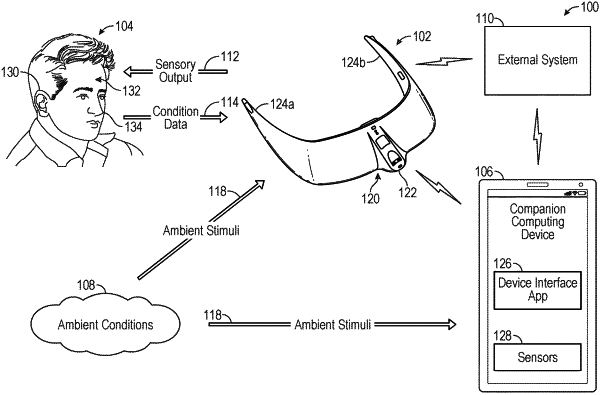| CPC A61B 7/04 (2013.01) [A61B 5/002 (2013.01); A61B 5/02444 (2013.01); A61B 5/08 (2013.01); A61B 5/11 (2013.01); A61B 5/4812 (2013.01); A61B 5/7282 (2013.01); A61B 5/742 (2013.01); A61M 21/00 (2013.01); A61B 2560/0242 (2013.01); A61M 2021/0027 (2013.01); A61M 2021/0044 (2013.01)] | 20 Claims |

|
1. A sleep management device comprising:
a front frame portion having a proximal side positioned to be directed towards a user when the sleep management device is worn by the user and a distal side directed away from the user when the sleep management device is worn by the user;
a display positioned to illuminate from the proximal side of the front frame portion;
a motion sensor positioned to sense motion of the user of the sleep management device;
an event circuit to:
determine a sleep time for the user of the sleep management device based at least in part on future time zone data describing a time zone that the user is to be in at a future time, wherein the event circuit is to generate a sleep instruction based at least in part on the sleep time;
receive a motion signal from the motion sensor;
compare the motion signal to a first reference motion signal describing a first body position of the user; and
detect a first wake event at least in part by determining that the motion signal differs from the first reference motion signal by less than a motion threshold;
a sleep routine execution circuit communicatively coupled to the event circuit and to receive the sleep instruction, wherein the sleep routine execution circuit is to execute a sleep inducement routine responsive to the sleep instruction; and
a wake execution circuit communicatively coupled to the event circuit, and to execute a first wake routine by modulating an output of the display.
|